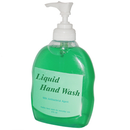Introduction: Digital Manufacturing - 3D Printed Toy Car Project
This is the fifth in a series of Instructables on how to use CAD (Computer Aided Drawing) and CAM (Computer Aided Machining)
This time we are going to make a toy car which has five parts, but we only need to draw four of them. You can customize your car, change the wheels or put a crash helmet on the driver, and we are going to use some functions of prodesktop that have not been covered before .
As we are going to print the car you need to give some clearance between parts that fit together. Project three has some more tips about designing for the 3D printer
This makes a great gift for little kids as they enjoy pulling it a part, racing it and leaving it lying around on the stairs for you to stand on in the middle of the night.
If you haven't seen project one, take a look as it covers where to get Prodesktop, how to activate the software, how to navigate the screen, what you will need and the mouse functions.
This instrctable assumes that you are getting familiar with prodesktop so has has not got the detailed instructions of the first three projects.
We will be focusing more on the design part of the program as common commands, engineering drawings and photo album have been covered in the first three instructables.
Other projects are here
Digital Manufacturing - project one Key tag
Digital Manufacturing - project two desk name plate
Digital Manufacturing - project three 3D printed box
Digital Manufacturing - project four laser cut box
As computer tutorials don't translate to text very well, for this series of instructables most of the info is in the photos. So click on the first photo and use the arrows to go to the next photo. The boxes in the photos show the location of the icons and have have text in them when you hover the mouse on them.
Step 1: Learning Intentions and Success Criteria
Learning Intentions
- To work safely in the workshop
- To improve my understanding of how the CAD software works
- To operate a laser cutter
- To be a self-directed learner
Success Criteria
- I understand the safety rules and I am working safely in the workshop.
- I can follow the instructions independently.
- I can produce 3D CAD drawings and convert them to an STL file.
- I can produce an assembly drawing.
- I can produce a photo album drawing of my project.
- I can operate a 3D printer safely and work safely in the workshop.
Step 2: Drawing the Wheels
Remember when making a new sketch you have to use the following steps, select the face you want to draw on / work plane/ new sketch/ give the sketch a name/ and then draw.
It is also important to get the wheel facing the correct direction so before you start drawing select the frontal work plane.
Also when drawing the first circle make sure its centre is on the point where the two arrows meet. This is important as this will be the origin point for our spokes.
The measurements are in the notes on the photo, it is important to stick closely to them as there are clearances so parts fit properly
click on the photo and use the arrows to follow along.
Step 3: Drawing the Driver
click on the photo and follow along.....
Step 4: Drawing the Body
Click on the photo to begin.....
Step 5: Drawing the Dovetail
click on the photos and follow along....
Step 6: Assembling Your Car and Checking Your Work
As always click on the photos and follow along....
Step 7: The 3D Print
With a project like this its a good idea to orient the parts so there is minimal support material (lest amount of overhangs). sometimes things can go bad for no apparent reason I printed several cars like this and the day I choose to photograph the process is when the driver losses his head. I just glued it back on but I can print another driver I'm sure it will be fine.
It took 2 hour 28 minutes to print the whole project.






